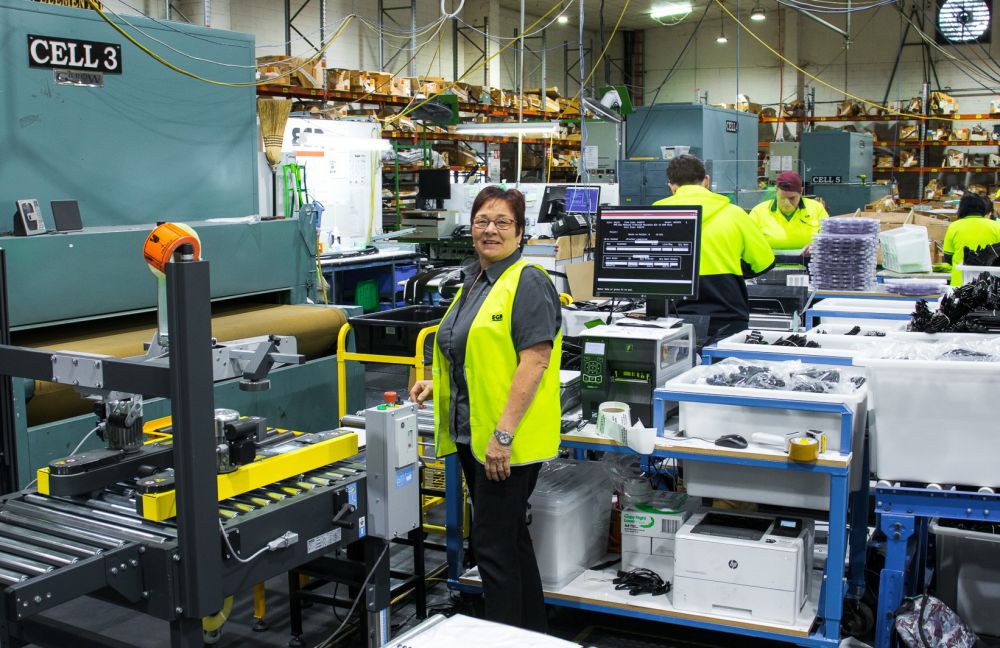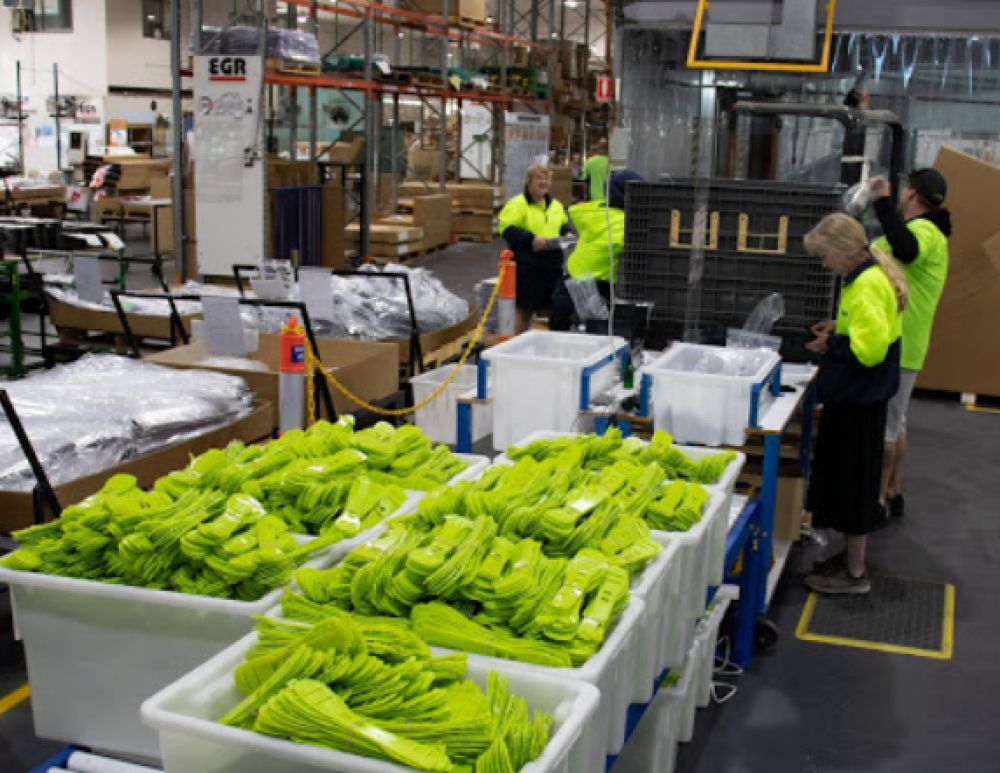Future proofing in a pandemic with new skills to help you adapt

It's a tough gig doing business in a pandemic.
I'm sure you'll agree adaptability is the skill we need most days.
Queensland auto parts business EGR Group certainly needed it to get through 2020.
At one point it was on its knees with sales drying up for its bull bars and ute canopies.
Within 6-8 weeks, it was churning out acrylic face shields.
I’ll share how they did it, then show you some upskilling trends to improve your own adaptability.
Adaptability in the workplace
Here’s what happened.
As sales plummeted for car accessories in March and April last year the family business EGR Group began selling acrylic sheets for shop counters.
But it didn’t stop there.
“We’re vertically integrated, so we can go from design to black box to finished product,” General Manager Sales and Marketing Noel O’Malley tells me.
“One customer tried to buy acrylic sheet to make face shields, so we thought why don’t we value add? Within 6-8 weeks we were in production.”
As the pandemic surged, team EGR upskilled in medical product design and supply. Making and selling 900,000 shields kept 50 people employed in the height of the crisis.
Noel told me EGR’s secret: “We’ve always moved quick.”
What’s the definition of adaptability?
IBM calls adaptability a “mandatory business competency.”
Adaptability means:
· Being able to respond creatively and effectively if things change.
· Being flexible when faced with novel problems.
It’s a “higher order skill” or “meta-competency.”
And you want higher order skills when you're critical thinking and problem solving.
More meta-competent people in your company? Yes please.
How do you get adaptability training that's cost-effective?
CFOs slashed budgets in 2020 across the board, cutting HR by an average of 5% according to UK's HR Magazine.
More cost cuts may be necessary this year as companies regroup and recover.
But improving adapting skills doesn't have to cost a lot.
Studies say you need:
· Career variety - exposure to lots of learning curves and challenges
· Learning and development as a lifelong habit
EGR offered great career variety for those employees tasked with the switch to medical products.

But EGR’s Noel O’Malley agrees training’s the magic ingredient in the adaptability skills of EGR Group. Internal and external learning is a management priority, which brings me to:
Trend #1 – Learning and development driven from the top
“Own it, own it, own it, own it, own it” – lyrics “Own It” by Drake
You wouldn’t buy a car and ignore it. You pay for skills training/L&D so own it.
Writing for Training Insider magazine Julie Kirsch and Shannon Wzientek say managers must become “active agents” in their teams’ upskilling.
“Learning can’t be entirely left to human resources (HR), the chief learning officer, or any other learning and development (L&D) professional,” they write.
It’s a manager who has the bandwidth to be the “continuous facilitator” of that learning with each employee.
How you can help:
· Lead by example. Ramp up your own upskilling/reskilling
· Create a learning culture
· Align/integrate learning with the business
Trend #2 - Making learning a part of everyday work
Casual Fridays are part of everyday work now. So is the dining table office. So is capsule coffee.
But back in 2018 learning expert Josh Bersin caught onto another trend he named:
Learning in the Flow of Work
What’s it all about?
First, no yoga mat needed. Bersin says it’s “learning something and then going back to work.”
It’s about keeping flow in your day and it's a godsend for busy teams and small teams.
A LinkedIn study threw up “lack of time for L&D” as a thorny problem for learners. Half of them preferred to learn in the flow of their work.
Examples of this type include:
· Short, real-time virtual masterclasses that sit inside a normal workday
· YouTube videos on a specific subject
· Training tutorials that pop up as you use the product
· Online conferences and virtual events where you stay at your desk
We know learning is important in the workplace, we now realise it’s important within the workday too.
Trend #3 – Employee engagement and meaningful work
You know burnout, right?
Ever heard of a condition called “bore out”?
Well just last year a French court awarded US$45,500 to a manager who suffered a nervous breakdown from “extreme boredom” at his job.
Not being challenged left the manager feeling “depressed and ashamed”, reports HCA Mag.
And hey, when you feel like that, you’re not feeling engaged and creative.
How do you stop this happening to your employees?
· Know them well. Meaning is linked to our personal identity. What’s meaningful for one person may not be so for another.
· Challenge them. Lead them up “The S Curve”
· Offer engaged learning opportunities. Every single person is on a learning curve.
· Think of your entire organisation as a collection of learning curves.
To build an “A Team” you must optimise those learning curves, says Whitney Johnson, author of Build an “A” Team: Play To Their Strengths and Lead Them Up the Learning Curve.
And, what’s a great way to make sure your learners are engaged learners?
Get them online…..
Trend #4 – Digital transformation of learning
I don’t know about you, but COVID-19 has been a boon for getting our company’s head around digital transformation.
IBM reports:
· nearly 60% of companies fast tracked their digital transformation during 2020.
· 55% of respondents say the pandemic has resulted in “permanent changes to our organisational strategy.”
One growing trend is the digital transformation of learning.
A Statista study showed an average:
- 1.4 hours are spent a week on online courses.
- 1.6 hours a week on digital reading.
And that was before the pandemic!
A curious key benefit to online learning is employee trust.
According to a survey by HR Dive:
· Employers significantly overestimate the amount and effectiveness of their support and training efforts.
· As a result, only about half of employees say they believe their employer is genuinely concerned about their welfare.
Want your employees’ trust?
Offer them lots of opportunities to learn:
· In an engaging way...
· In real time...
· On their laptop or mobile..
· During work hours.
Trend #5 – Capabilities over skills
I’m learning to ocean swim.
My friend is too but she’s afraid of putting her head under the water.
But because she's capable I know she'll conquer this scary ocean swimming thing.
- The definition of being capable: able to achieve efficiently whatever one has to do; competent
Whether you’re scared of the ocean, or scared of being irrelevant at work, or scared of your business future, the key is acquiring new capabilities.
It's like upgrading your personal software, if you will.
· PWC’s Workforce of the Future report found 74% of those surveyed were ready to learn new skills or re-train to remain employable in the future.
You can build your own capability muscle by:
1. Pushing yourself to do challenging stuff
2. Asking yourself “How can I improve?”
3. Reaching out to others for help
4. Taking more risks, being more courageous at work
5. Making lifelong learning part of who you are
“We should remember that intellectual complacency is not our friend and that learning - not just new things but new ways of thinking - is a life-long endeavour.” -Blair Sheppard, Global Leader, Strategy and Leadership Development, PwC
Conclusion:
It’s a tough world of work out there.
Like EGR Group, we’re all having to adapt to the new conditions and reinvent ourselves and our businesses.
So let’s go back to EGR for a moment and find out how they’re doing today.
Turns out, great!
When COVID-19 hit, they were employing 700 people in Australia. After their short-term wobble keeping 50 people to make acrylic facemasks, they’re now up to 850 staff and growing.
It seems travel restrictions got many people excited about exploring their own backyard by 4-wheel driving.
And so what do they need in 2021?
Bull bars and ute canopies!
If you'd like to increase your professional development why not consider becoming a member of The Growth Faculty? One membership, unlimited access to 30 live virtual Time For Transformation masterclasses and the best live virtual events - PLUS year-round leadership content On Demand with videos, podcasts and book summaries. Join a community of knowledge seekers who are inspired by the best. Access $4350+ value for just $398 AUD. See who's up next.


 Australia
Australia
 European Union
European Union
 New Zealand
New Zealand
 United Kingdom
United Kingdom
 United States
United States
 Singapore
Singapore

